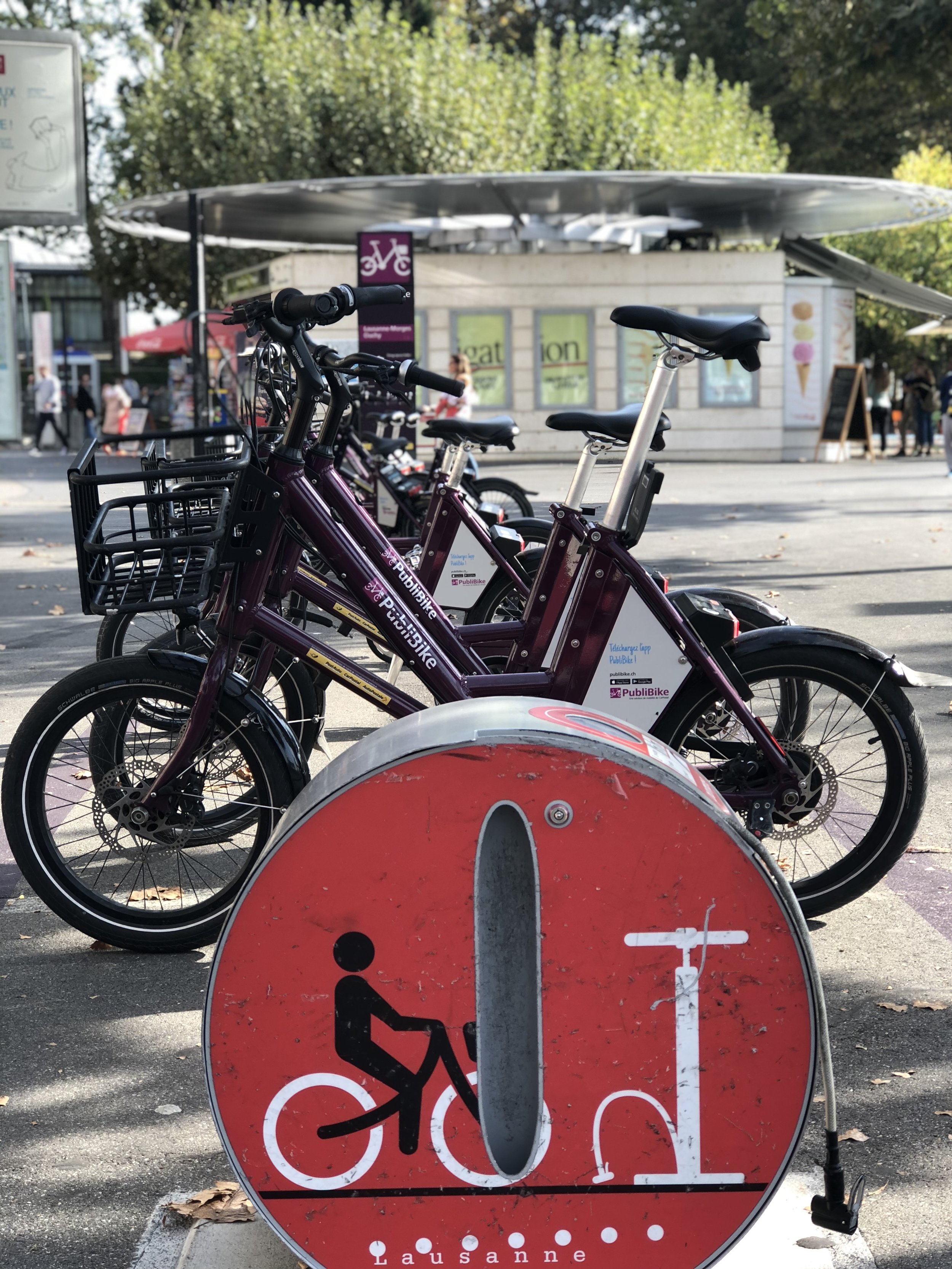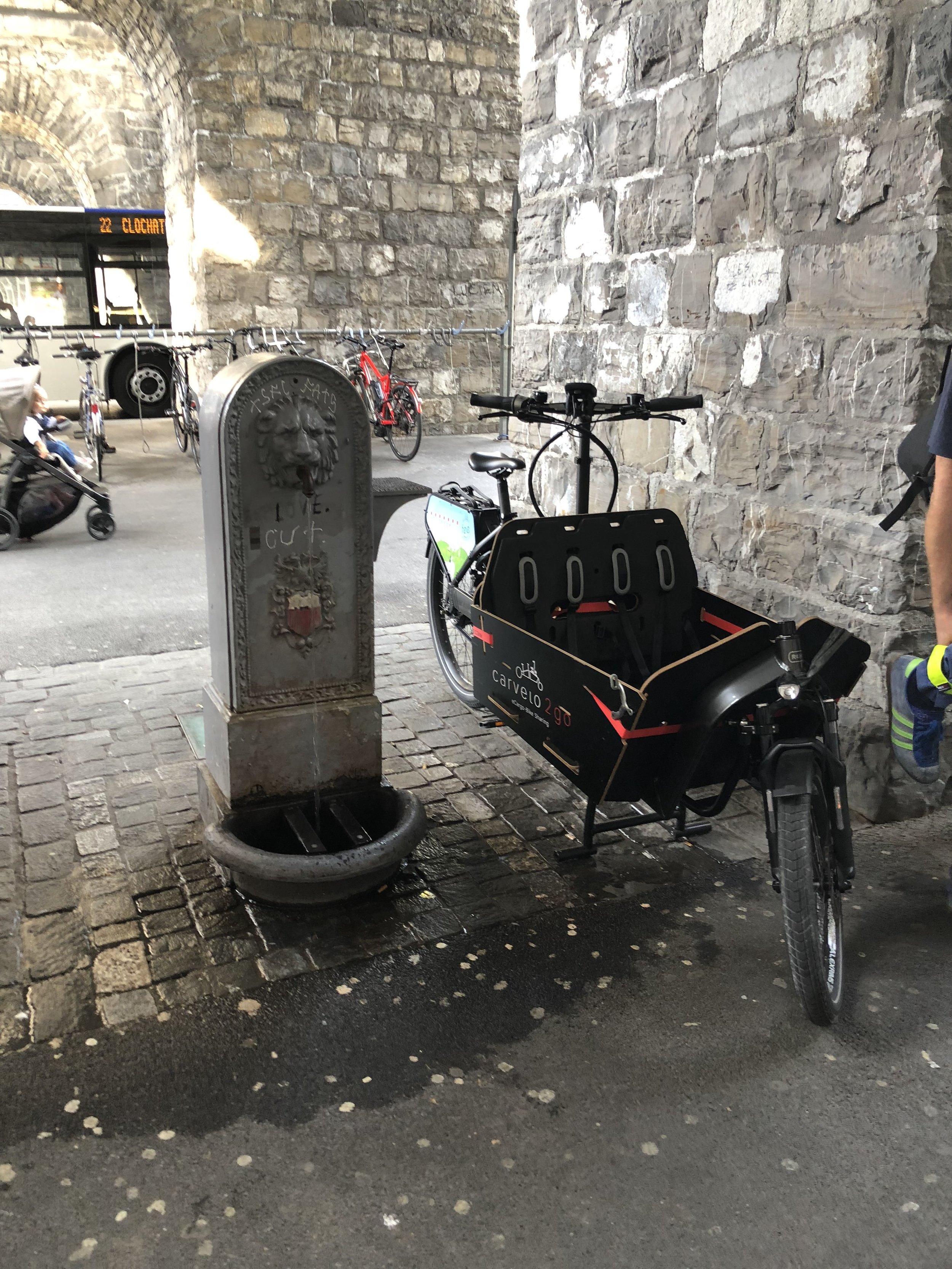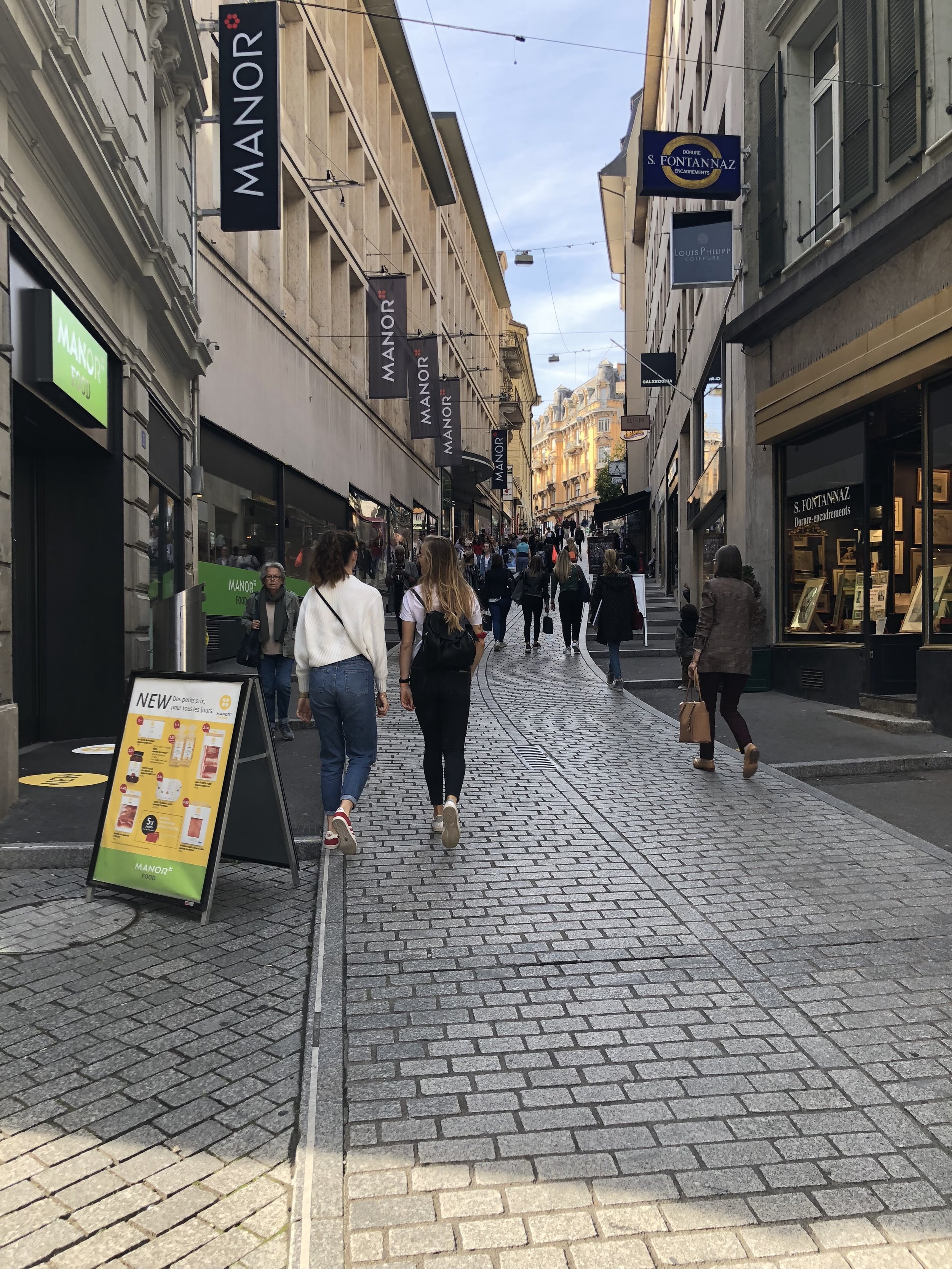On September 23, Swiss voters passed a referendum — by 73.6% — to make it official in the national constitution for the Kantons and the federal government to coordinate on the development of bicycle infrastructure.
Nearly a month later, members of our French Copenhagenize Design Co. office, who are working on an assessment of the cycling policy of the City of Bern, the capital of Switzerland, went on a field trip to four Swiss cities to better understand the current climate surrounding cycle tracks. The team biked in Geneva, Lausanne, Bern, and Basel. Although the cities are not far from each other, there are major differences in the bicycle infrastructure of each city. In the first of this three-part Swiss series, we explore the good, the bad, and the ugly of Geneva and Lausanne.
If one wants to arrive to Bern by plane, one has to fly to either Geneva or Basel first. We decided to start the journey in Geneva and to end it in Basel, the most bicycle-friendly city in Switzerland, as we were told.
In the international city of Geneva, the modal share of the bicycle is 7%. For bicycle users, the infrastructure is lacks safety and continuity.
“This situation is changing for better infrastructure,” said Louis-Philippe Tessier, a Genevoi and former Copenhagenize Master Class participant. “However, it’s a slow process.”
Cyclists from Geneva mostly share road space with buses or pedestrians. When they benefit from a dedicated piece of infrastructure, it often takes the form of a narrow lane placed between the moving vehicles and the parked ones. Nonetheless, Geneva developed an interesting approach to overcoming the city’s topography for both pedestrians and cyclists: a public lift, built into a residential building, that connects the area around the Rhône with a tophill district located four stories above.
A bicycle lane merging with the sidewalk in Geneva. On the left side, the public transportation passes by, while on the right, pedestrians roam through the bicycle lane.
Traveling to the North-East alongside Lake Geneva on our way to Bern, we stopped at Lausanne. Located on a steep hill, the city isn’t what one would consider inviting to cycle, and the infrastructure is nearly nonexistent. However, Nuria Medir Benito, another former Master Class participant, argued that Lausanne isn’t that uninviting to bike. The steep streets might not be appealing at first glance, but with knowledge on which streets to take, one can avoid the steepest routes to reach a number of by bicycle. There is even an public e-bike sharing scheme and a cargo bike-lending facility operated by carvelo2go. They offer an innovative way to lend cargo bikes, including local shops as rental stations to pick-up and drop-off the said two-wheelers. After the success of the system in Bern, carvelo2go expanded into several other Swiss cities, including Lausanne. With a growing attention to bicycle urbanism, we hope to hear more in the future about this quiet and picturesque lakeside city.




